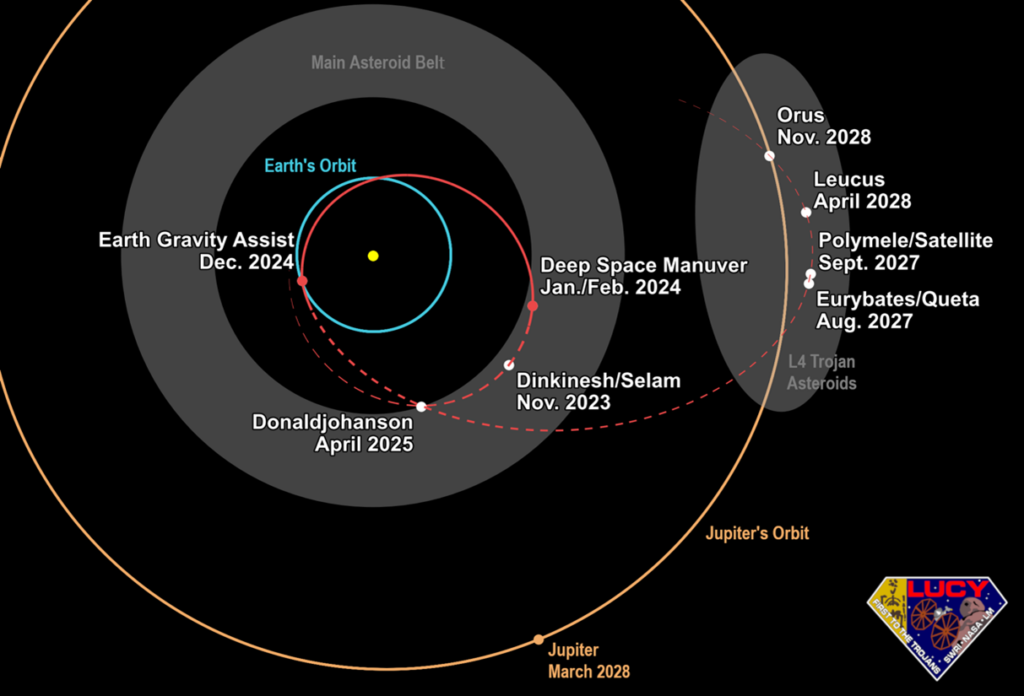
NASA’s asteroid-hopping Lucy mission is finally getting fired up in space for its trip to the never-before-explored Trojan asteroids, which follow Jupiter as it orbits the sun.
On Wednesday (Jan. 31), the Lucy spacecraft will fire its main engines off-Earth for the first time since its launch in Aug. 2021. The firing of Lucy’s main engines will see the spacecraft burn through around half of its onboard fuel. This will be followed by a second, larger maneuver, which NASA says is currently set for Saturday (Feb. 3).
The aim of these two early 2024 operations is to change Lucy’s velocity by around 2,000 miles per hour (3,217 kilometers per hour.)
Prior to these two maneuvers, the spacecraft had undergone maximum shifts in velocity of around 10 mph (16 kph), but those were small enough to be achieved by the spacecraft’s secondary, less powerful thrusters.
Related: NASA’s Lucy spacecraft successfully completes 1st flyby of asteroid ‘Dinky’
Following these maneuvers, the next major milestone for Lucy will be a flyby of Earth in Dec. 2024, at which time the spacecraft will get a second gravity assist from our planet that’ll hopefully slingshot it onto a new trajectory. Lucy will come as close as 230 miles (370 kilometers) to the Earth during this flyby.
In particular, the combination of these 2024 maneuvers will shift the spacecraft from its current orbit of the sun, which just skims the main asteroid belt between Mars and Jupiter and allowed it to visit the tiny asteroid Dinkinesh, or ‘Dinky’ on Nov. 1, 2023. In the process of doing this, Lucy helped NASA scientists discover Dinky is actually a double (double-double, in a way) asteroid system.
The resultant new orbit of Lucy will carry the spacecraft out past the main asteroid belt. During this passage, Lucy will take the opportunity to visit the small main asteroid belt body 52246 Donaldjohanson in April 2025.

After this, Lucy will be on track toward Jupiter and to the domain of the Trojans, which share the gas giant’s orbit around the sun. The Trojans are arranged in two loose groups, with one set slightly ahead of the gas giant, the Greek camp, and another behind it, the Trojan camp.
Lucy will visit the Greek camp of Trojan asteroids first, setting its sights on the asteroid Eurybates and its satellite or ‘moonlet’ Queta in August 2027.
After this, the spacecraft will fly past another four Trojan asteroids and three more moonlets, eventually making a final visit to Earth in 2031 before the Lucy mission draws to a close in 2033.

